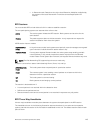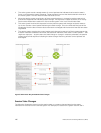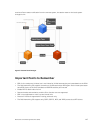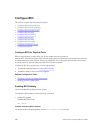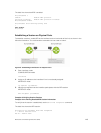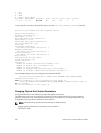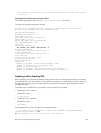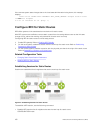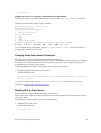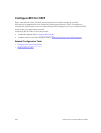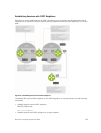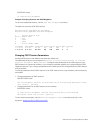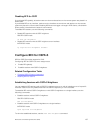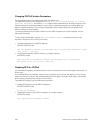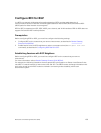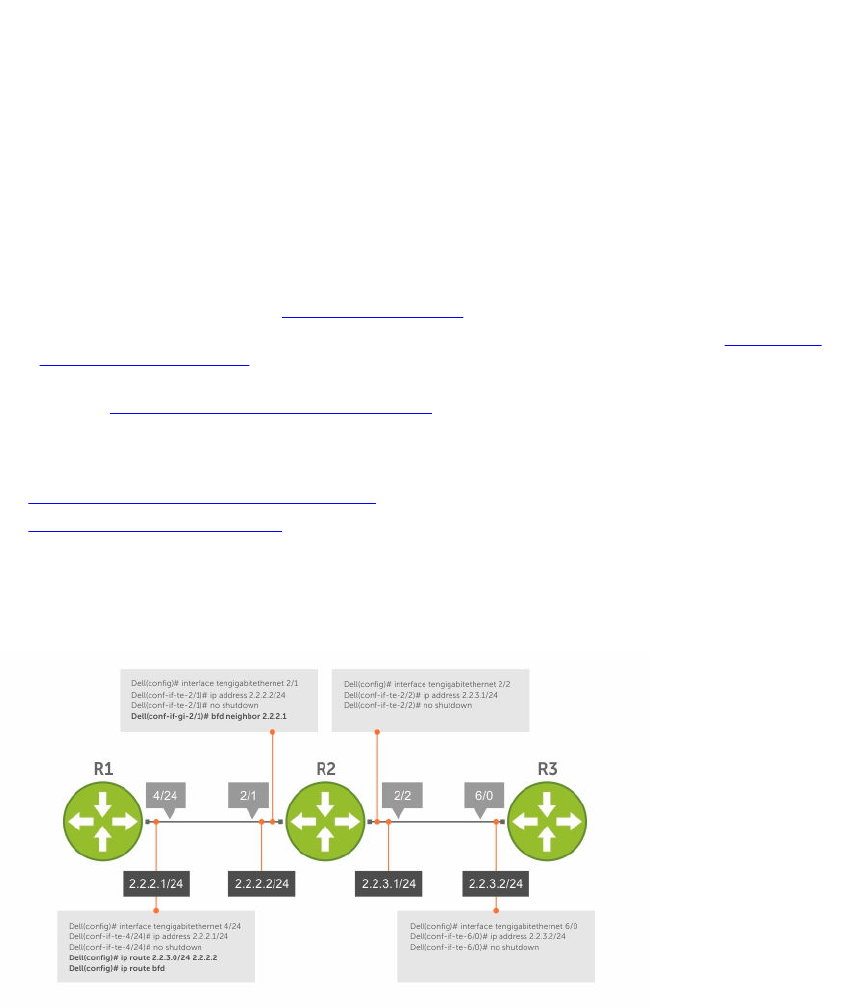
If the remote system state changes due to the local state administration being down, this message
displays:
R2>01:32:53: %RPM0-P:RP2 %BFDMGR-1-BFD_STATE_CHANGE: Changed session state
to Down for neighbor
2.2.2.1 on interface Gi 2/1 (diag: 7)
Configure BFD for Static Routes
BFD offers systems a link state detection mechanism for static routes.
With BFD, systems are notified to remove static routes from the routing table as soon as the link state
change occurs, rather than waiting until packets fail to reach their next hop.
Configuring BFD for static routes is a three-step process:
1. Enable BFD globally. Refer to Enabling BFD Globally.
2. On the local system, establish a session with the next hop of a static route. Refer to Establishing
Sessions for Static Routes.
3. On the remote system, establish a session with the physical port that is the origin of the static route.
Refer to Establishing a Session on Physical Ports.
Related Configuration Tasks
• Changing Static Route Session Parameters
• Disabling BFD for Static Routes
Establishing Sessions for Static Routes
Sessions are established for all neighbors that are the next hop of a static route.
Figure 11. Establishing Sessions for Static Routes
To establish a BFD session, use the following command.
• Establish BFD sessions for all neighbors that are the next hop of a static route.
CONFIGURATION mode
152
Bidirectional Forwarding Detection (BFD)




